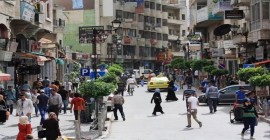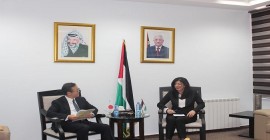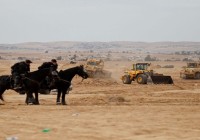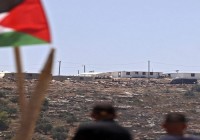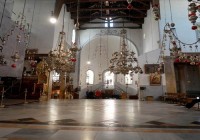The Monthly PMA Business Cycle Index (PMABCI) – February 2016
The PMA has released the results of its Business Cycle Index (PMABCI) for February 2016. The results showed that the overall PMABCI for Palestine has improved due to its continued climb in the West Bank (WB) for the third consecutive month, in addition to a notable improvement in Gaza Strip's (GS) index this month. Thus, the overall index picked up again to around 6.6 points this month, compared to around -5.9 points during last January, and around 2.4 points in the February 2015.
In the WB, the index has improved from 0.5 points in January to around 10.0 points in February supported by the improvement in all industrial sub-sectors, except for marginal declines in leather and paper industries. The textiles sub-sector led this improvement, as its index increased from 2.2 points to around 6.2 points, followed by an increase in the food sub-sector's index (from 2.0 points to 4.8 points) in the same period. Also the sub-sectors' indices for traditional industries, chemicals and pharmaceuticals, plastics, construction, furniture, and engineering industry have all improved, at varying degrees.
Despite the recent political and security turmoil in the WB, which started in early October 2015, it was generally felt that the situation had not deteriorated seriously enough. This eased the public's concern and heightened industrial establishment owners' optimism, raising forecasted production and employment for both this month and the near future.
In GS in February 2016, the index soared to an eight-month high of -1.6 points versus -22.5 points in January, due mainly to improvements in food and textile sub-sectors. The food index jumped from -9.3 points to 2.1 points, the textile index rose from -2.3 points to around 4.6 points, and most remaining sub-sectors witnessed moderate improvements; only the furniture industry slightly declined.
The above-mentioned increments in the sectoral indices reflected an improvement in industrial establishments owners' outlook, as their pessimism about near future declined to its lowest level in more than a year. However, despite this progress, Gaza's index continued to be in the negative range for two consecutive years (except for June 2015). This reflected the continuous dire and worsening political and economic conditions in the Strip as the contributing factors to this deterioration persisted. These factors included deficiencies in raw materials; shortages in electricity and fuel supplies; and prolonged delays in reconstruction efforts, in lifting the Israeli blockade, and in opening the Rafah border crossing.
It is worth mentioning that the PMABCI is a monthly index, which aims to capture the state and evolution of economic activity in Palestine by tracking the performance of the industrial sector, especially fluctuations in production and employment levels and their implications for the economy at large. The maximum value of the PMABCI is positive 100 point, while the minimum is minus 100 point; a positive value indicates favorable economic performance, while a negative value indicates bad performance. On the other hand, a value close to zero indicates that economic performance did not change and is unlikely to do so in the near future.
(Palestine Economy Portal)

